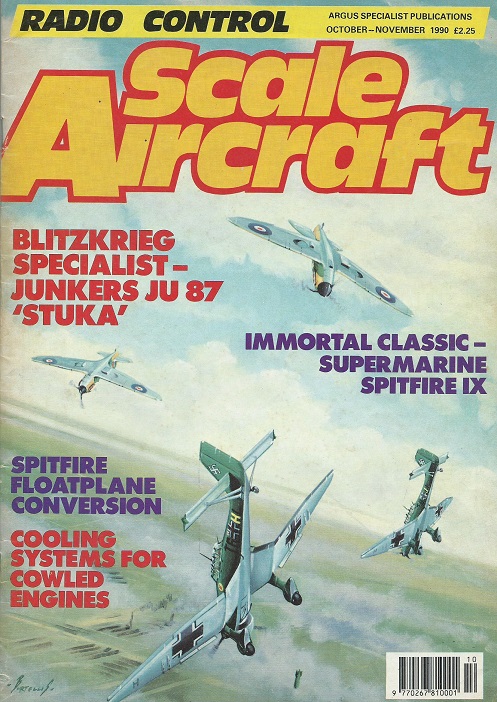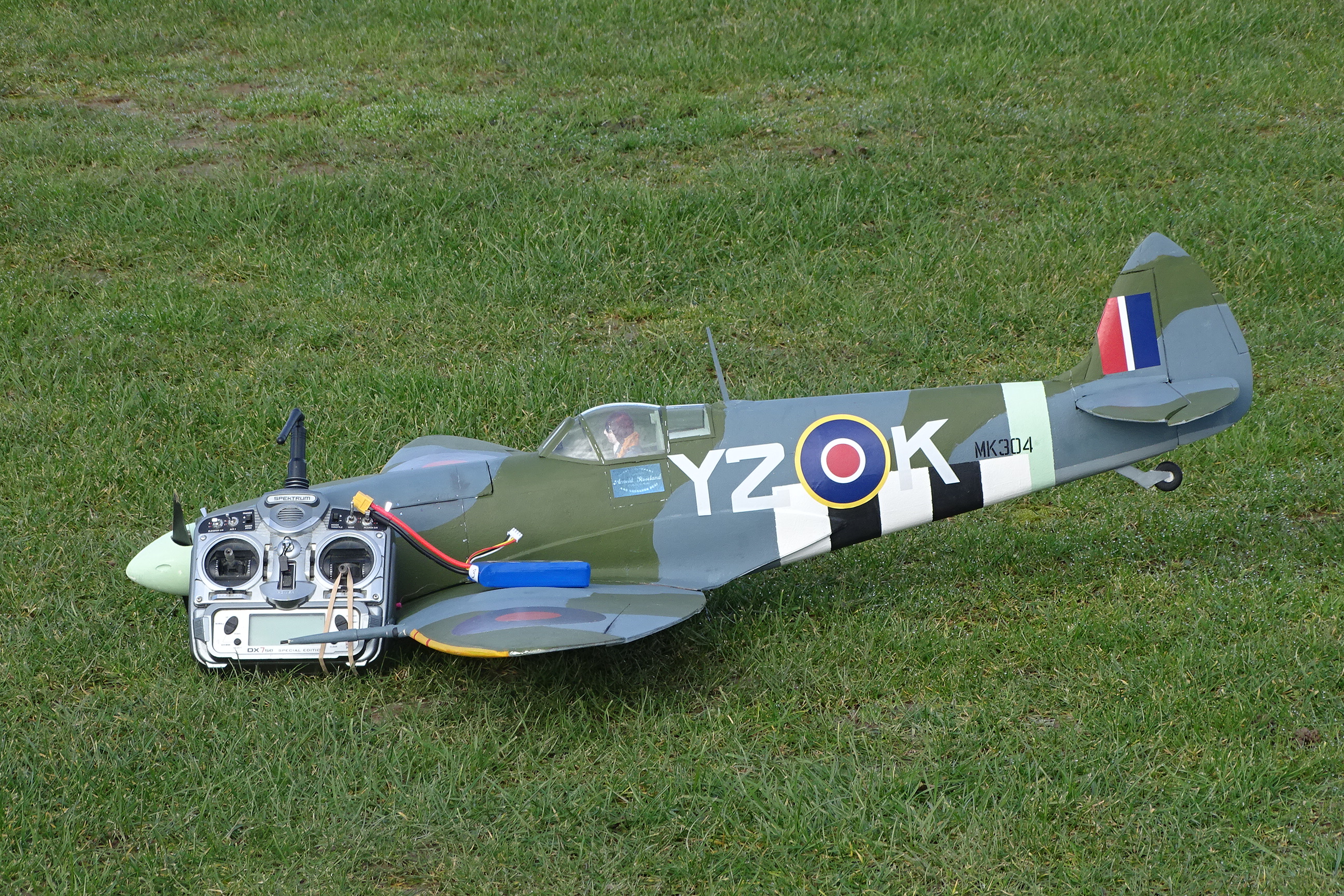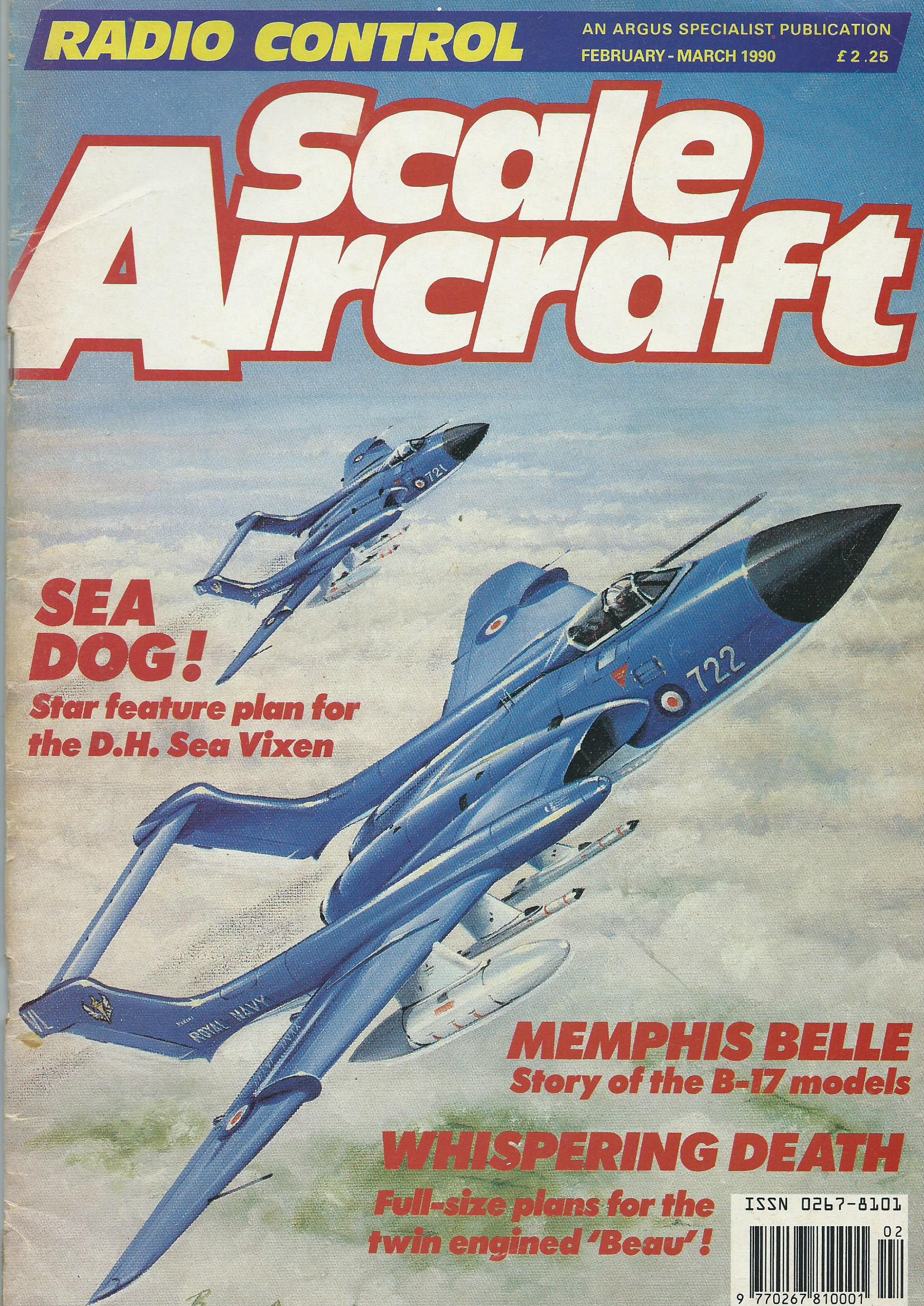|
Christchurch and District Model Flying Club |
|
A FOUR-FOOT BEAUFIGHTER, BY MIKE ROACH |
|
There’s something about small easily transported depron models that is a welcome change from the big balsa and ply builds that I usually fly. There’s the ease of construction for a start (although this can be overestimated) and then there’s the flying style. With the big models I’m generally content to let them trundle round the sky with only as much control input as is necessary to keep them flying in a scale way - a slow pass followed by a throttle-up climb out and a gentle circuit and back for a touch and go is all I really want. But with small models, aerobatics, full-throttle passes, steep turns and recoveries is fun indeed, rather like watching USAF A10s exercising in the Rhine valley back in the 80s. Most of the free plans presented with various magazines over the last 30 years have been of relatively small models designed for .10 or .20 IC power. These models are perfect for re-designing in depron for electric power and half the weight. I started last year with a 48” span Ian Peacock Spitfire from RCSA back in November 1990. This has been a successful project and with the ubiquitous 3 cell 2200mAh battery and three functions (no need for a rudder when you don’t have retracts or a fixed UC to worry about) she flies for an easy five minutes full throttle.
There is always a lot of satisfaction from getting a model to look right, and the simple paint scheme and vinyl decals from Calligraphics made it look a far better build than it really was. The canopy came from Sarik vacforms and the spinner is a stock item, not particularly scale, but adequate. So what to do next? More plundering of the archives and my favourite plane of all time, the Bristol Beaufighter, came to the top of the pile. Those who have seen Trevor’s Lockheed Lightning dashing round the patch will recognise a plan from the same era, also for a couple of .10 engines - this model is much the same, although from a different designer, John Deacon, published just a few issues before the Spitfire in February 1990.
The Beau normally has Bristol Hercules radial engines but I thought these would be too vulnerable for a belly landing, so I chose the Merlin-engined MkII, although I don’t think it looks as good as the radials. You can see how the radiator cowling will be much better at taking Strawberry Field’s grass than the circular cowls of the other Marks. And I fancy the all-black night fighter finish of most of the MkIIs - so easy to paint! The wing is built round a 2mm balsa frame with 3x3mm hardwood spars top and bottom, glued onto 2mm depron lower skin. The ribs and sub-spars are all 6mm depron. The tail surfaces are two layers of 6mm depron glued together and rough sanded with a big block to airfoil shape. The tailplane will have a balsa LE and TE, with the elevators centre hinged. The rudder will be fixed. The wing outer sections are built one side at a time, propping up the CS to ensure a straight build. The ailerons are built in and will be separated when the wing is top skinned, making sure to add some washout when doing so. I made the nacelles from liteply and glued them in place after the outer wing sections were top skinned. The motors are Turnigy Park 350s with handed 9 x 6 props and 18A SCs, and will provide far too much power I’m sure. I screwed them to doubled litelpy mounts, adding the wiring for the ailerons and SCs at the same time. Because the nose of the Beau is so short, I plan to have a 3 cell 1300 battery in each nacelle. The RX is in the wing CS because there is only the elevator servo to connect up - anyway the model is small enough to leave rigged and still fit in the car. The side cheeks are more 6mm depron. These will take the main landing loads so may need to be reinforced before adding the nacelle shape round them. That’s as far as I’ve got - more as it occurs.
Mike
|
|
[Home] [Chairman's Chatter] [Lest I forget] [A busy day] [Pushy Cat] [Beaufighter] [Tailpiece] |










